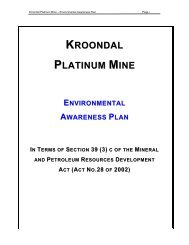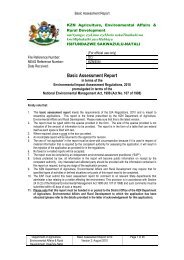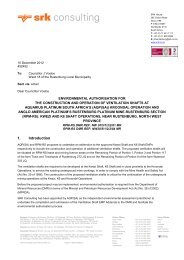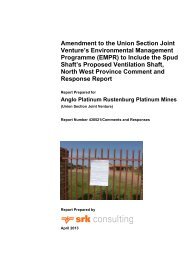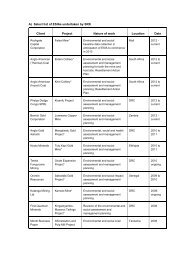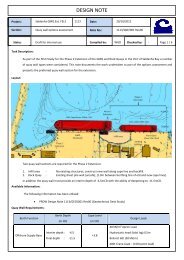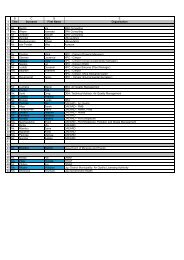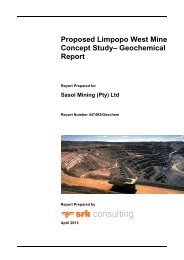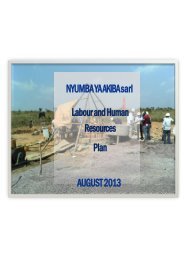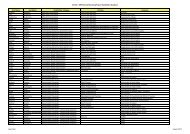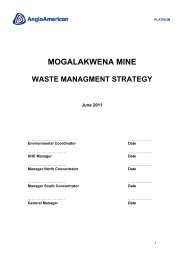Biodiversity (1 - SRK Consulting
Biodiversity (1 - SRK Consulting
Biodiversity (1 - SRK Consulting
You also want an ePaper? Increase the reach of your titles
YUMPU automatically turns print PDFs into web optimized ePapers that Google loves.
8. RESULTS: MAMMALS<br />
Acocks (1988), Mucina and Rutherford (2006), Low & Rebelo (1996), Knobel and<br />
Bredenkamp (2006), SANBI & DEAT (2009) discuss the peculiar natural plant<br />
associations of the study area in broad terms. Rautenbach (1978 & 1982) found that<br />
mammal assemblages can at best be correlated with botanically defined biomes, such<br />
as those by Low and Rebelo (1996 & 1998), and latterly by Mucina and Rutherford<br />
(2006) as well Knobel and Bredenkamp (2006). Hence, although the former’s work has<br />
been superseded by the work of the latter two, the definitions of biomes are similar and<br />
both remain valid for mammals and are therefore recognized as a reasonable<br />
determinant of mammal distribution.<br />
The local occurrences of mammals are, on the other hand, closely dependent on broadly<br />
defined habitat types, in particular terrestrial, arboreal (tree-living), rupiculous (rockdwelling)<br />
and wetland-associated vegetation cover. It is thus possible to deduce the<br />
presence or absence of mammal species by evaluating the habitat types within the<br />
context of global distribution ranges. Sight records and information from residents or<br />
knowledgeable locals audit such deductions.<br />
8.1 Mammal Habitat Assessment<br />
Most of the study site comprises natural habitats, subject to relatively low stocking levels<br />
of livestock (sheep, goats, cattle, horses), with the most disturbed areas around water<br />
points, farm houses, access tracks and along the old road and water pipeline servitudes<br />
north of and more or less parallel to the N14.<br />
The local occurrences of mammals are closely dependent on broadly defined habitat<br />
types, in particular terrestrial, arboreal (tree-living), rupiculous (rock-dwelling) and<br />
wetland-associated vegetation cover. It is thus possible to deduce the presence or<br />
absence of mammal species by evaluating the habitat types within the context of global<br />
distribution ranges.<br />
From a mammal habitat perspective, it was established that two of the four major<br />
habitats are very prominent on the study site, namely terrestrial and rupiculous (rock-<br />
78



